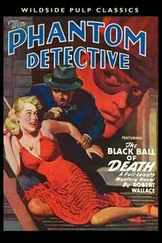The final solution was to build a house on a pier above the Thames and dump the offal directly in the river during the ebb tide.
Even with such precautions the state of the streets was far from satisfactory. The tenement buildings, in which each storey projected two or three feet beyond the one below, seemed designed for the emptying of slops, garbage and soiled rushes into the street. The gutters, which ran down the centre of the narrower streets and both sides of the wider ones, were generally inadequate to carry away the litter, augmented as it was by the dung of the innumerable domestic animals which lived in the centre of the city. The open sewers which ran down to the river were better able to manage the load but even these were often blocked and inadequate, especially in times of drought, to clear away all that was put in them.
To deal with these problems the common council appointed a number of ‘scavengers’ with instructions to ‘remove all filth, and to take distresses, or else fourpence, from those who placed them there, the same being removed at their cost’. By 1345 the penalty for defiling a street had risen to two shillings and every householder was deemed responsible for a mess outside his house unless he could prove his innocence. At least one city raker was appointed for each ward and there seem to have been between forty and fifty carts and horses. The householders, knowing that they would be the ones to suffer if a street was allowed to grow filthy, could generally be relied on to support the efforts of the authorities. Sometimes, indeed, their aid seemed over-enthusiastic as when a pedlar threw some eel skins to the ground in St Mary-le-Bow and was killed in the resultant struggle.
But though refuse might have been removed with some efficiency from the city centre, too often the system subsequently broke down. Large dumps were established on the banks of the Thames and the adjoining lanes. In 1344 the situation had become so bad, especially around Walbrook, Fleet Stream and the city ditch, that a comprehensive survey of all the lanes was ordered. But though there was some improvement it does not seem to have lasted long. Thirteen years later the King was complaining bitterly that his progresses along the Thames were being disturbed by the ‘dung, lay-stalls and other filth’ which were piled up along the bank. {289}
The overall picture, therefore, is of a city squalid and insauitary enough but aware of its deficiencies and doing its best, though with altogether inadequate tools, to put things right. The records reveal many cases of behaviour in wanton defiance of the rules of hygiene but the very fact that such behaviour was commented on and sometimes prosecuted shows that the picturesque excesses, so dear to the heart of the antiquarian, were not permitted to flourish unchecked. A responsible city council and a population on the whole aware of its civic duties did quite a good job of keeping London clean.
But the Black Death proved altogether too much for the public health services. In 1349 the King wrote to the mayor to remonstrate about filth being thrown from the houses so that ‘the streets and lanes through which people had to pass were foul with human faeces and the air of the city poisoned to the great danger of men passing, especially in this time of infectious disease’. The mayor was helpless. Not only had many of the efficient cleaners died or deserted their post and the machinery for the enforcement of the law been strained beyond its capacities but also the technical problem of transporting something over twenty thousand corpses to the burial grounds had imposed an extra and unexpected burden on the skeleton force which remained. Even ten years later the service was far from normal; in the year of the Black Death itself the most lurid imaginings of a romantic novelist would hardly have done justice to reality.
* * *
There are so many different routes by which the Black Death could have arrived in London that it would be pointless even to speculate from whence it came. By the end of September 1348 the Prior of Canterbury had addressed an alarmed mandate to the Bishop of London on the incursions which the plague was making in the latter’s diocese, {290} but it does not follow from this that infection was already within the city. Nevertheless it seems certain that the city was affected before the greater part of the surrounding countryside and that there were cases as early as November 1348, and perhaps sooner still. But the main force of the epidemic was not felt until the beginning of the following year. {291}
Spring, though any generalization about the plague has many exceptions, was usually one of the less dangerous seasons for outbreaks of bubonic plague. {292} Both from the histories of subsequent epidemics in London and from the evidence which survives of the Black Death itself it seems likely that, from January to March, a strain of pulmonary plague predominated but that the pure bubonic plague came into its own with the warm weather in the late spring and summer. As always in a large community, the disease lasted longer and consumed more gradually than in a small town or village. Deaths were still common till far on into 1350 and, though the full fury of the epidemic lasted only three or four months, almost two years passed between the Black Death’s arrival and the final casualties.
In January 1349 shortly before Parliament was due to assemble, the King prorogued it on the grounds that ‘…the plague of deadly pestilence had suddenly broken out in the said place and the neighbourhood, and daily increased in severity so that grave fears were entertained for the safety of those coming there at that time’. The King’s concern for his legislators was proper and, in the event, well justified but seems a little premature. It may well have been little more than a pretext. {293} In January 1348 Parliament had proved recalcitrant and, when they eventually and grudgingly granted a subsidy for three years, they made it clear that they felt the burden of taxation to be unreasonably heavy. With his subsidy safely in his pocket the King would have jumped at an excuse to be spared the grumbling of his legislators. The epidemic came just in time to furnish it.
The existing graveyards were soon too small to meet the demand. A new cemetery was opened at Smithfield and hurriedly consecrated by Ralph Stratford, Bishop of London. But the second of the two new cemeteries, founded by the distinguished soldier and courtier, Sir Walter Manny, has provided historians with the greatest confusion. Early in 1349 Sir Walter leased for twelve marks a year and subsequently bought some thirteen acres of unused land to the north-west of the city walls at a spot called Spittle Croft. He built a chapel on the site, dedicated to the Annunciation, and threw it open for the overflow of victims of plague within the city. {294} Eventually the Charterhouse was built on part of the ground. The confusion arises over the number of dead which the new graveyard accommodated. Robert of Avesbury says that two hundred people were buried there almost every day between the feast of the Purification (2 February), and Easter (2 April). {295} If this is taken to mean that burials took place at this rate during what must have been the worst months of the plague and it is assumed that they continued at a reduced rate for the next few months, then a minimum of seventeen or eighteen thousand victims must have found a home there. This figure is enormous but still trifling compared with that put forward by the London historian, Stow, {296} who recorded that he saw an inscription in the churchyard which read:
A great plague raging in the year of our Lord 1349, this churchyard was consecrated; wherein, and within the bounds of the present monastery, were buried more than fifty thousand bodies of the dead, besides many others from thence to the present time, whose souls God have mercy upon. Amen.
Читать дальше












